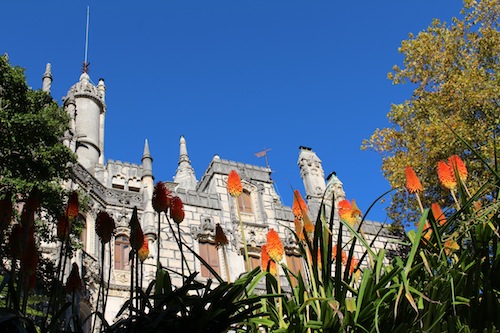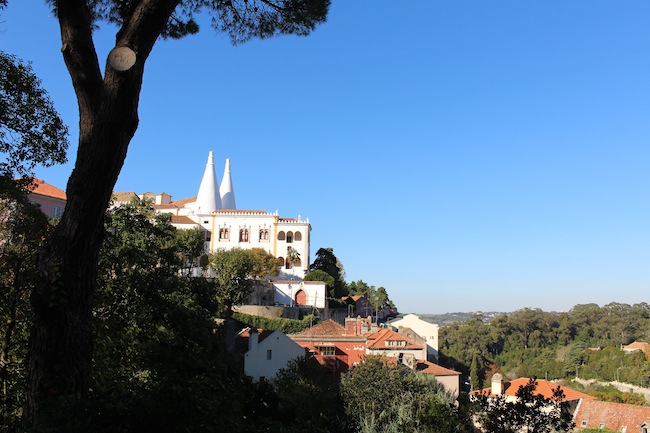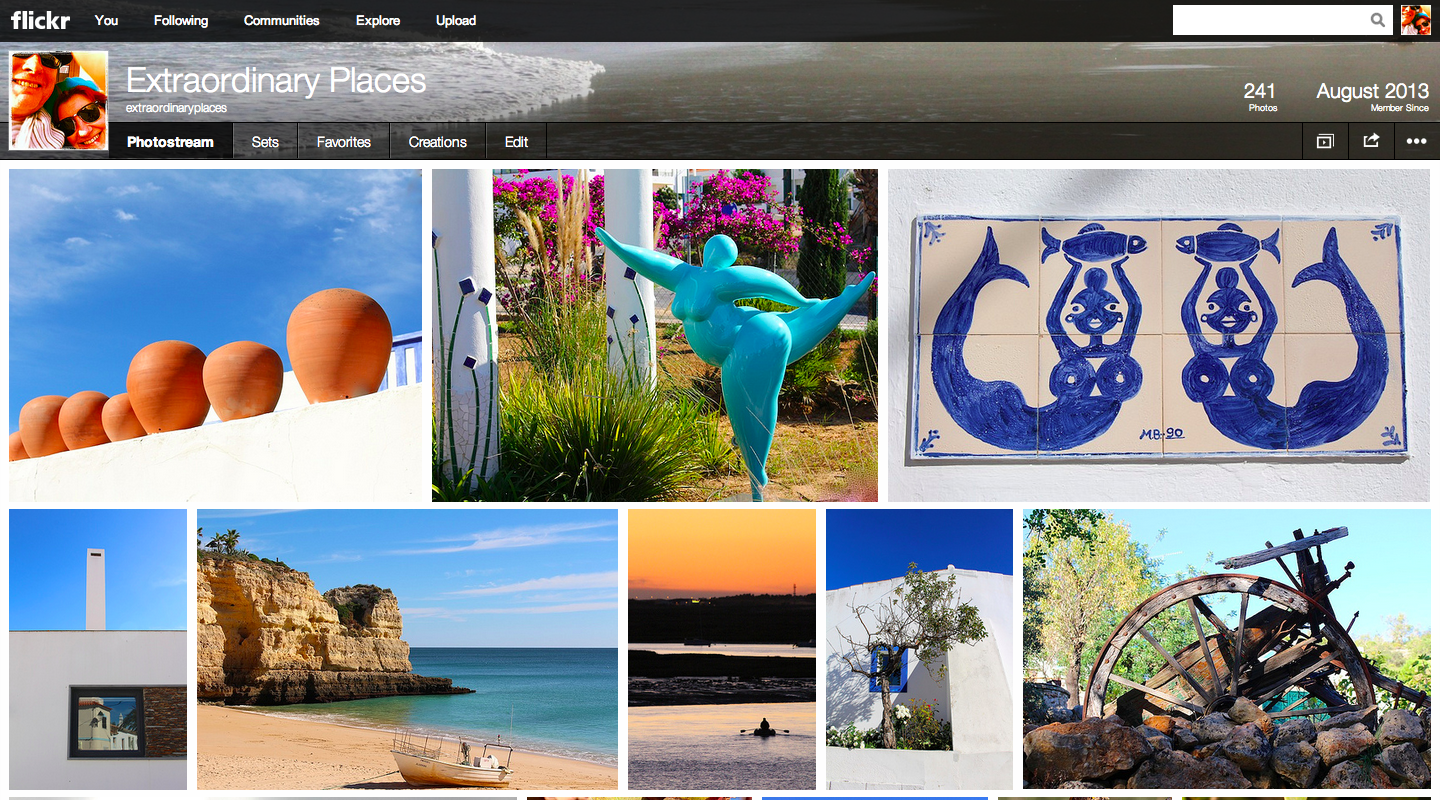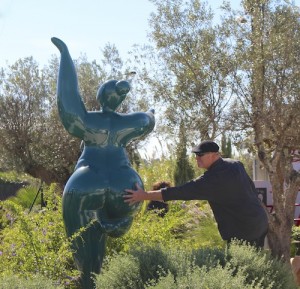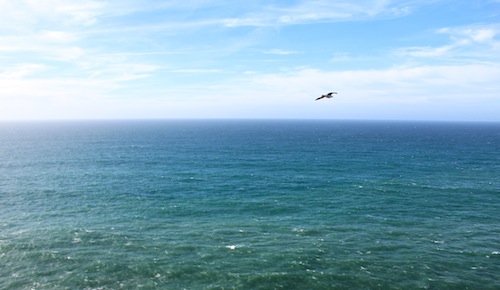At one time it was thought to be where the known-world ended, at another it was the nerve-centre for maritime developments that later made discovering the New World possible.
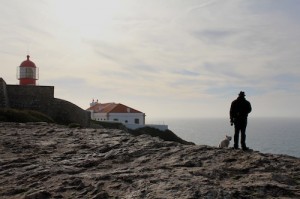
Geoff and Dougal at the end of the world
Cabot St Vincent today is a windswept mixture of old and new. Jutting out into the ocean one cliff holds up a still-working lighthouse, warning sailors not of the end of the world, but at least of the monster cliffs at the very westerly edge of Portugal.
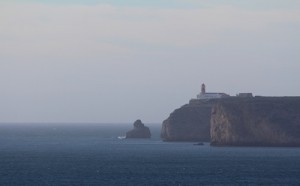
The lighthouse at Cabo St Vincent, the most southwesterly point in Europe
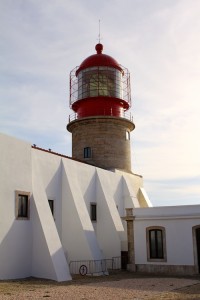
A powerful warning to sailors
Guarding one of the world’s busiest shipping lanes, it is one of the most powerful lighthouses in Europe; its two 1,000W lamps can be seen up to 60 kilometres away. While it offers sound warning to seafarers, it has no impact on the local fishermen who literally risk their lives to fish off the pounded cliffs. Three have died in the last year alone.
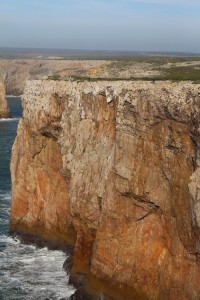
Tiny dots of fishermen dice with death on the cliff tops

No safety harness, not even a warm coat!
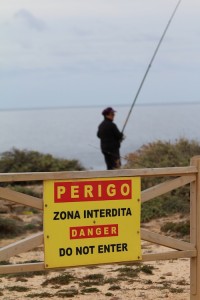
A stern warning goes unheeded
And it is a mecca for surfers.

Riding the waves in the 21st century – what would Henry have thought?
The other side of an often sea-misted bay is the rather tired remains of what is claimed to be Henry the Navigator’s mission control – his austere ocean-gazing fortress at Sagres – in which it is claimed that monumental changes to maritime exploration were developed.
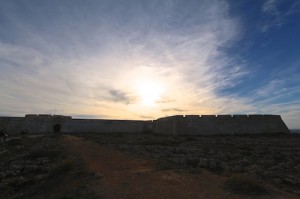
Henry the Navigator’s fortaleza at Sagres
Portuguese Prince Henry “the Navigator” was quite a guy. Born in 1394, his life was devoted to seafaring, navigating, plotting and colonising. He designed revolutionary new styles of ships – caravels – that were lighter, faster and better equipped to trade further afield than just around the Mediterranean, as the heavy ships of his day did. Fully embracing the age he sponsored mapmakers and navigators; and under his direction, Portugal laid claim to many new places including the Azores and Madeira and named the Sargasso Sea. Henry was the catalyst that made Portugal the first global and Europe’s longest running empire – from the taking of Ceuta in 1415, to the returning of Macau in 1999.
The mythology of the fortaleza at Sagres is that Henry created a navigation school that drew in the brightest and best; in order to send them back out on a mission to conquer the known world. The centre-piece of the ruins is the massive “compass rose”- a 50 metre diameter structure only discovered in 1919 and claimed by some to be a navigation tool of the school, and by others to be a later-built sundial.
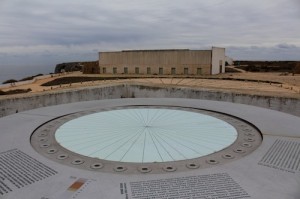
Ancient and modern – the compass rose and explanation at the fortaleza, Sagres
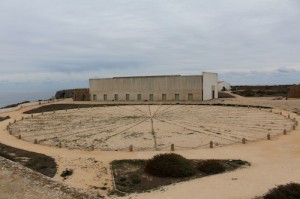
The compass rose at Sagres Fortaleza
Modern historians point to the lack of documented evidence of what would have been such an esteemed academy to cast doubt on its veracity.
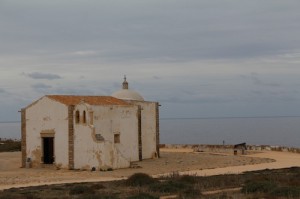
All that really remains of Henry’s days in Sagres – the humble chapel looking out to sea
Others claim that, years later, when English captain Sir Francis Drake sacked Sagres, en route to wiping out the Spanish Armada, he destroyed all the documents and maps stored at the fortaleza.
But never mind the maritime mythology. But there is no question that Henry contributed massively to the advancement of sailing, shipbuilding, mapmaking, and discovery. His obsession with exploration and of course colonization, led to improvements in vessels and navigation that lay the foundation for the famed and feted explores such as Columbus, de Gama, Magellan, Holden and Nimmo.
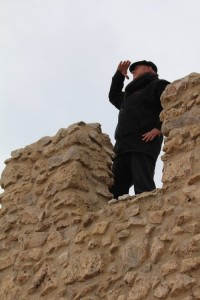
Nimmo the Navigator
Okay, jokes aside, these days the site maybe a slightly desolate place, but Henry’s own wanderlust still inspires us all.
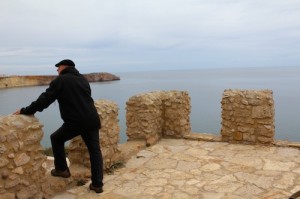
Dreaming of distant shores
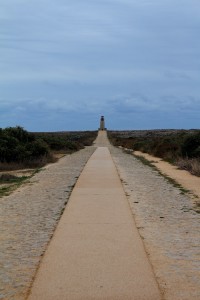
Just beyond the lighthouse – the ocean at the end of the lane






















